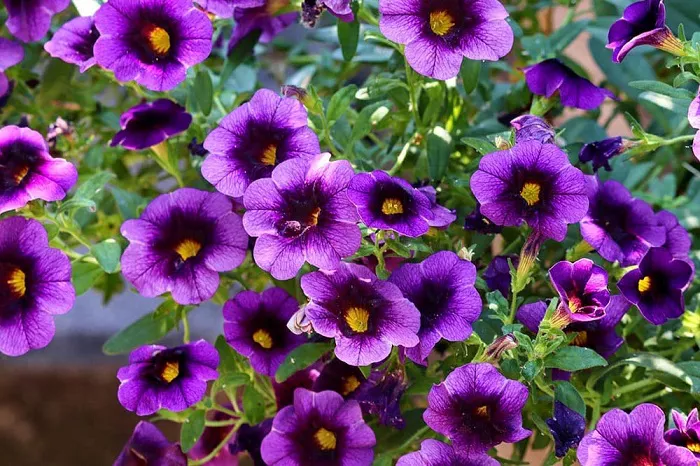Petunias are beloved for their vibrant blooms and low-maintenance nature. However, striking the right balance when it comes to watering can be a bit tricky. Whether you’re a seasoned gardener or a novice with a green thumb, understanding the watering needs of petunias is essential for ensuring these charming flowers thrive. In this article, we will delve into the nuances of watering petunias for maximum bloom, covering everything from soil conditions to seasonal considerations, so you can enjoy a flourishing display of color in your garden.
Understanding Petunias’ Watering Needs
Petunias are versatile plants that can tolerate a range of growing conditions, but their watering requirements are nuanced. These flowers prefer well-draining soil, which is crucial for preventing waterlogging and root rot. Generally, petunias need about 1 inch of water per week, either from rainfall or supplemental watering. However, this amount can vary depending on factors such as weather conditions, soil type, and the specific variety of petunia.
Soil and Container Considerations
The type of soil in which petunias are planted significantly impacts their watering needs. Well-draining soil is ideal, as it allows excess water to flow away from the roots, reducing the risk of waterlogging. If your garden soil is heavy or clay-like, consider amending it with organic matter such as compost or perlite to improve drainage. For container-grown petunias, ensure that the pots have drainage holes to prevent water from pooling at the bottom. Additionally, the size of the container matters; smaller pots may dry out more quickly and require more frequent watering, while larger pots can retain moisture longer.
Seasonal Variations in Watering
The amount of water petunias need changes with the seasons. During the spring and early summer, when temperatures are moderate and rainfall is more frequent, petunias may require less supplemental watering. However, as the weather warms up and becomes drier, especially in midsummer, they may need more frequent watering to stay healthy. In hot, dry climates, petunias may need watering every day or every other day, while in cooler, more humid climates, they might only need watering once or twice a week. Pay attention to the weather forecast and adjust your watering schedule accordingly.
Signs of Overwatering and Underwatering
Recognizing the signs of improper watering is crucial for maintaining healthy petunias. Overwatered petunias may exhibit yellowing leaves, wilting, and root rot. The soil may also have a foul smell, indicating poor drainage and excess moisture. On the other hand, underwatered petunias will show signs of wilting, dry soil, and brown leaf edges. The key is to strike a balance and water the plants deeply but infrequently, allowing the soil to dry out slightly between watering sessions. This encourages the roots to grow deeper and helps the plant become more drought-tolerant.
Watering Techniques and Tips
When watering petunias, it’s important to use the right techniques to ensure the water reaches the roots without causing damage to the foliage. Water the plants at the base, avoiding wetting the leaves and flowers, as this can lead to fungal diseases. Use a gentle stream of water or a soaker hose to deliver water directly to the soil. Mulching around the base of the plants can also help retain soil moisture and regulate soil temperature, reducing the need for frequent watering. Additionally, consider using a moisture meter to monitor the soil’s moisture levels, especially if you’re unsure whether the plants need watering.
Special Considerations for Different Petunia Varieties
Different petunia varieties may have slightly different watering needs. For example, grandiflora petunias, which produce large, showy flowers, may require more consistent moisture to support their larger blooms. In contrast, multiflora petunias, which have smaller but more numerous flowers, are generally more drought-tolerant and may need less frequent watering. Spreading petunias, often used in hanging baskets and containers, may dry out more quickly due to their shallow root systems and may require more frequent watering, especially in hot weather. Always consider the specific needs of the petunia variety you are growing and adjust your watering practices accordingly.
Watering Petunias in Containers vs. In-Ground
Container-grown petunias have different watering needs compared to those planted directly in the ground. Potted petunias tend to dry out more quickly, as the soil in containers has less capacity to retain moisture. Check the soil moisture daily, especially during hot weather, and water when the top inch of soil feels dry. In-ground petunias, on the other hand, may require less frequent watering, as the soil can hold moisture longer. However, they still need consistent watering, especially during dry spells. Ensure that the soil is well-draining to prevent waterlogging, which can be more challenging in containers.
The Role of Fertilization in Watering
Fertilizing petunias can also impact their watering needs. Regularly feeding petunias with a balanced, water-soluble fertilizer can promote healthy growth and more abundant blooms. However, it’s important to avoid over-fertilizing, as this can lead to excessive growth and increased water requirements. When fertilizing, always water the plants thoroughly to ensure the nutrients are evenly distributed in the soil and to prevent fertilizer burn. Additionally, well-fertilized petunias may need more frequent watering to support their growth, so adjust your watering schedule accordingly.
Conclusion
Watering petunias is a delicate balance that requires attention to soil conditions, weather patterns, and the specific needs of the petunia variety. By understanding the nuances of their watering requirements and adjusting your practices accordingly, you can ensure a vibrant and healthy display of blooms. Whether in containers or in the ground, providing consistent and appropriate moisture is key to enjoying the beauty of petunias in your garden.


